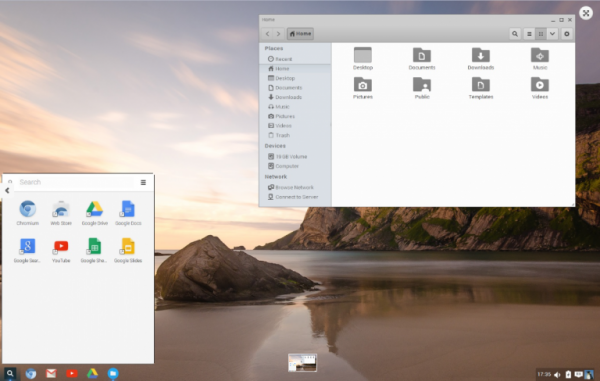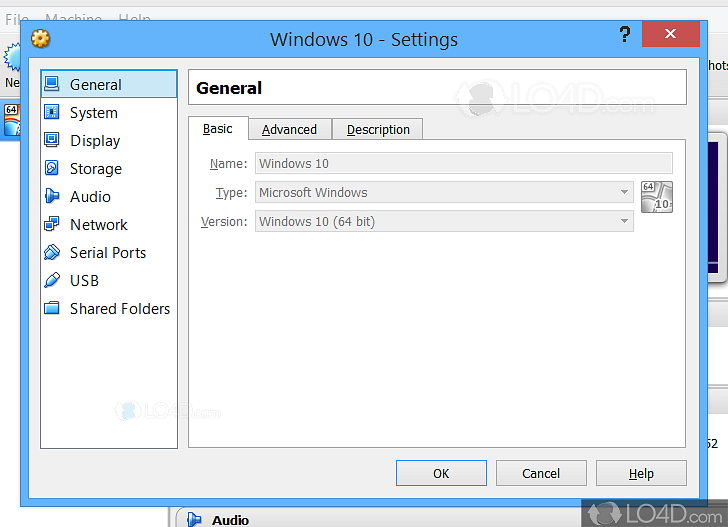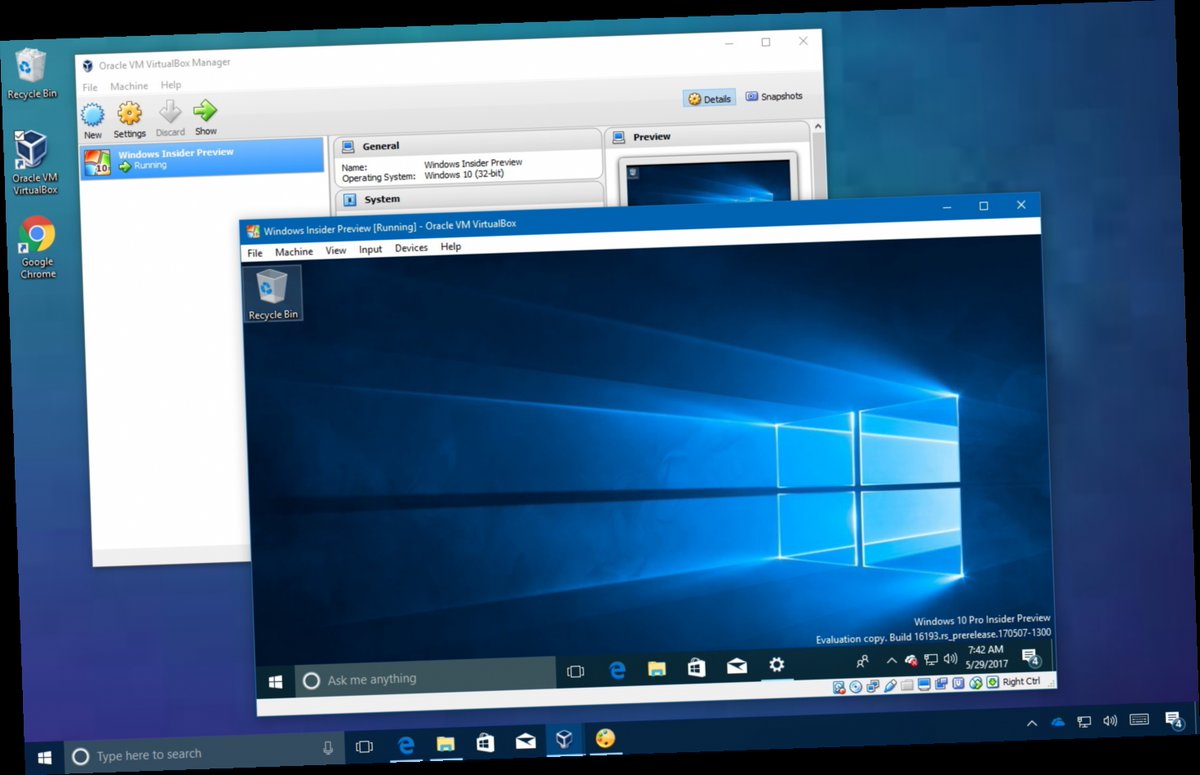After the release of Windows 10 to the public, many people are interested in continuing on the early release builds coming out as well. Using visualization is a great alternative to outright installing Windows 10, or newer builds, that allows users to try new features without risking any damage to their system. VirtualBox is free for all users. Operating System: Windows XP/Vista/7/8. Can run on both a 32-bit and 64-bit OS. File Size: 108.56 MBs. VirtualBox is a multi platform and open-source virtualization tool for Windows, Linux, Mac OS X, and other operating systems, that lets you create virtual disc units in which you can install a guest operating system within the one you normally use on your computer, using it in the same way as if it was actually installed. Oracle Virtual Box: link for mac users: http://download.virtualbox.org.
How-to convert a (UEFI-based) Windows 10 physical installation into an Oracle VirtualBox guest.
You will need Windows 10 installation .iso to complete this guide. Don't forget to make sure you are licensed properly as well.

5 Steps total
Step 1: Create a VHDX/VHD
You will need to run (as administrator) SysInternal's Disk2vhd on the computer you are converting
Download Disk2vhd from https://docs.microsoft.com/en-us/sysinternals/downloads/disk2vhd
Simply select where you want to save the file to and click 'Create'
Step 2: Convert VHDX to VDI
On the computer you have Oracle VirtualBox installed run the following command in Powershell (as administrator). You will need to run this command from the directory that VirtualBox is installed to i.e. C:Program FilesOracleVirtualBox
./VBoxManage clonehd .vhdx .vdi --format VDI
Step 3: Create a Virtualbox VM
Create a New VM from within VirtualBox Manager and choose 'Use an existing virtual disk file' which points to your newly created VDI file.
After it is created open Settings for the VM.
Under System > Motherboard make sure only Hard Disk and Optical is selected, Optical is at the top of the boot order and 'Enable EFI (special OSes only)' is ticked.
Under Storage, point the optical drive to the Windows 10 installation ISO.
Configure the rest as you please.

Step 4: Boot VM to Optical Media
Once you have booted to the installation media and it is asking for 'Language to install,' etc, press Shift+F10. This will open a command prompt.

In the command prompt run 'diskpart'
Enter the command: 'list vol'
This will list off the volumes and should show Volume 3 as a RAW FS. You will need to format this EFI partition. Use the following commands
'sel vol 3'
'format quick fs=fat32 label='System'
If you enter 'list vol' again you will see the changes made.
Exit diskpart by entering command 'exit'
Run the command 'bcdboot C:Windows' which will add the required boot records.
Step 5: Restart VM to Disk
You can now close out of the installation media and restart. On restart make sure you don't boot from the Optical drive again and it should boot into Windows as expected.
You have now converted your physical Windows 10 UEFI device to an Oracle VirtualBox VM.
Below I have added a reference to doing this in Hyper-V, which is part of what I followed to create the above guide. I have also added a reference to licensing requirements as suggested by a comment.
References
- Don't forget licensing requirements!
- Hyper-V - Create and Use VHD of Windows 10 with Disk2VHD
15 Comments
- MacePatrickFarrell Nov 27, 2017 at 04:27am
Make sure it's licensed properly when you do this.
https://community.spiceworks.com/how_to/124053-licensing-windows-10-with-virtualization-technologies-how-to
- SerranoGlorified Pet Rock Nov 27, 2017 at 01:55pm
I was just about to write my own tutorial on this same subject. We still have some Fire Control Panels that MUST talk to a Win XP for programming and nothing else. I have been converting a Win XP dual boot to a VHD for use in Oracle VM for this issue. Great write up.
- CayennejhTech86 Nov 27, 2017 at 07:42pm
Just read the licensing post. I didn't realize that Chris spoke Chinese. I assume the licensing info was written in Chinese because I couldn't make heads or tails from it.
- Jalapenonexus0000 Nov 28, 2017 at 02:11pm
This is a neat guide, VMware has a free software that can do this as well.
https://www.vmware.com/products/converter.html
- TabascoWarKraft Nov 28, 2017 at 03:06pm
Cool article thank anyone out there know how to do this to create a vm box on vmware host?
- SerranoScarInt Nov 28, 2017 at 03:13pm
This was my missing step (diskpart and bcdboot) for migrating a bare metal server (Server 2012) to KVM. Volume names were different, but that was easy to re-interpret.
- JalapenoSadTech0 Jan 19, 2018 at 08:05pm
I did this step by step in a lab environment and it went perfect. Good to learn for future use. Thanks!
- Macebbigford Feb 23, 2018 at 04:27pm
Nice write up. I'm assuming this is just a test machine, or maybe something being used for OS deployment/builds?
- DatilSimon Matthews Apr 4, 2018 at 01:55am
This was originally a request from a customer because they needed to be able to access an old database for a piece of hardware they were replacing. In the end it turned out we only needed to backup the database and keep a copy. The person installing the new piece of hardware had no idea about how the software (they were supposed to be experts with) worked.
- Anaheimdtrade84 Feb 12, 2019 at 06:33pm
I have Windows 10 running on VirtualBox, but it seems to be running a little slow. Any tips on how I can speed it up? I'm running Windows 7 on a dual boot MacBook Pro late 2011, with an i7 and 8GB of ram. I tried it on Workstation Pro 15, and still slow. Any help will be appreciated.
Thank you.
- SerranoTony2065 Apr 21, 2019 at 02:35pm
Good article. I haven't used Virtualbox in a while. I'l take another look at it.
- SerranoRich8790 May 23, 2019 at 01:39pm
Feeling embarrassed... having an brain freeze...I am not seeing anything about step 4. It looks like the virtual is running, but I do not see any display, just a black screen.
- SerranoShanePlus Aug 6, 2019 at 12:14am
@dtrade84
Your laptop will support 16GB of RAM. I would consider maxing it out and running the Windows 10 instance with 8GB of RAM. - Pimientospicehead-vbpyc Nov 14, 2019 at 01:56pm
Thanks, just perfect and works like it should. Regards, Aym
- Pimientospicehead-1n8hq Mar 20, 2021 at 01:49pm
Step: 4: Boot VM to Optical Media does not work for me.
I can't change boot to ISO
ISO works perfectly fine, I used it to make a new W10 in VB.Please Help
Best regards
JC
Portable-VirtualBox is a free and open source software tool that lets you run any operating system from a usb stick without separate installation.
Installation instructions
- Download and run Portable-VirtualBox_v5.1.22-Starter_v6.4.10-Win_all.exe.
- Choose a folder to extract to.
- Go to the folder and run Portable-VirtualBox.exe. You'll see a window like the one below:
- If you have already downloaded the installer for VirtualBox from www.virtualbox.org click search and navigate to the file. If not, click 'Download The Installation Files of VirtualBox.' Portable-VirtualBox will show you the download's progress.
- Once the installer is download, check the boxes that are appropriate and click OK. Portable-VirtualBox will extract the files it needs from the VirtualBox installer, and restart itself afterward if you select the last checkbox.
Optional configuration
Portable-VirtualBox makes default settings automatically. You can modify them by pressing CTRL-5 or opening the tray menu while Portable-VirtualBox is running. Either action will bring up the configuration GUI below. The Hokey-Settings tab is shown open in the image below:

Features
- Splash screen to start and end
- Configurable Home Directory
- Launch the VirtualBox GUI or directly launch a VM
- Configure the hotkeys for managing your virtual machine
- Configure USB and network support
- Choose language for GUI
- Saves settings in editable *.ini-files
- Can automatically check for VirtualBox updates
- All absolute paths in the VirtualBox.xml are replaced automatically by relative paths
- Checks to make sure VirtualBox files exist
Install files signature
All install files after launcher version 6.4.10 is digitally signed. Signer is “Open Source Developer, Runar Buvik”, certificate is issued by Certum Level III CA. This is temporarily disabled until a new certificate arrives in the mail.
Note
VirtualBox needs several kernel drivers installed and needs to start several services: if the drivers and services are not already installed you'll need administrator rights to run Portable-VirtualBox.
When Portable-VirtualBox starts, it checks to see if the drivers are installed. If they are not it will install them before running VirtualBox and will remove them afterward. Similarly, Portable-VirtualBox checks to see if the services are running. If not, it will start them and then stop them when it exits.
If you want to save space you can remove the language files for other languages than your own. That can save you nearly 10 MB. They are in the nls directory.
You can also delete the documentation saving nearly 5 MB. You will find it in the doc directory.
When the VM is running you must press the 'Host-Key' (initially configured as the right CTRL-Key) to be able to use the other Hotkeys since otherwise the VM will have the focus.
Network support
- To download of Portable-VirtualBox
- Unpack from Portable-VirtualBox
- Start from Portable-VirtualBox
- Attitudes open (Tray --> attitudes, CTRL+5) --> rider Network (Tab) --> VirtualBox with network support start --> memory (save)
- Terminate from Portable-VirtualBox
- Start from Portable-VirtualBox
- Driver installation agree
- Wait
- Selection of a VM and the network map to host interfaces stop
- Attitudes make
- FINISHED
Oracle Virtualbox Download 32 Bit
Languages of Launcher
Download Virtualbox For 32 Bit Windows 10
English, German, Portuguese, Spanish, French, Italian, Chinese, Japanese, Polish, Russian and Ukrainian.
Important

Virtualbox Download In 32 Bit
None of the files that come from VirtualBox are modified or otherwise changed.
Portable-VirtualBox downloads the VirtualBox installer which contains all of the VirtualBox files and drivers. Portable-VirtualBox unpacks the files and stores them in subdirectories . Portable-Virtualbox can also compress them in order to save space.
Virtualbox 5.2 For Windows 10 32 Bit
[adsense:client=ca-pub-123456,slot=123456,type_ad=head]